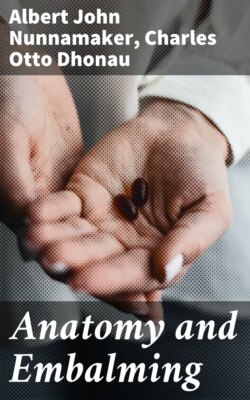Читать книгу Anatomy and Embalming - Charles Otto Dhonau - Страница 30
На сайте Литреса книга снята с продажи.
A Cell.
Оглавление—A cell is defined as a nucleated mass of protoplasm endowed with the attributes of life.
Protoplasm is the name applied to the semi-fluid, granular substance contained within the cell.
The simplest forms of animal life are organisms consisting of only one cell which are called protozoa.
Cells having similar shape and similar functions are grouped to form tissues.
Tissues are grouped together to form organs.
Every cell consists of a cell body and a nucleus. The cell body consists of a substance known as protoplasm. The nucleus is the essential part of a typical cell and is the controlling center of its activity.
Fig. 1—A, A vertical section of the cuticle; B, the lateral view of the cells; C, the flat side of scales like (d) magnified 250 diameters.
Cells divide or reproduce themselves by means of direct or indirect division. In direct division the nucleus and the cell wall simply divide into two equal divisions and results in the formation of two new cells. In indirect division the process is much more complicated, and several stages must be passed through before there is a complete division.
The process of fertilization consists in the conjugation of two sexual cells. The male sexual cell is called the spermatazoon, and the female sexual cell is called the ovum.
The nucleus of the ovum in its earlier development stages is known as the germinal vessicle.
In the living organism many cells are destroyed during the various physiologic processes and are replaced by new ones. When a cell dies, changes take place in the nucleus which result in its gradual disappearance. This process is known as chromatolysis.
